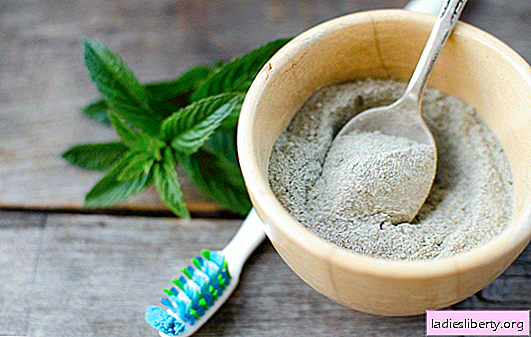
Inflammation of the fallopian tubes, or salpingitis, occurs due to the fact that an infection penetrates the woman's body.
The first thing that is affected is the uterine mucosa, then the infection penetrates deeper and a serous cover forms. If untreated, serious complications will arise, which will ultimately lead to infertility.
Inflammation of the fallopian tubes causes
The only and main reason for the development of inflammation is infection. The disease begins to develop due to the fact that microbes and infections that enter from the outside develop in the body.
The main route by which an infection can enter the fallopian tube is through the uterus. If the woman is absolutely healthy, then the uterine cavity is sterile, and the cervical canal protects her from infection, and more precisely, these are the cells that line her cavity. It is thanks to such channels in the cervix that there is a lot of mucus. They have good bacterial properties and serve as a kind of barrier so that the infection does not penetrate.
However, there are unfavorable conditions under which the protective properties weaken, and the infection can freely enter the uterus, and then into the tubes, it is there that inflammation begins to develop.
Many factors contribute to the development of the inflammatory process, which include the following:
1. Erratic sexual relations. From unprotected sex with a man, a woman can get sexually transmitted diseases. The most dangerous for appendages is considered gonorrhea infection. Gonococci can completely or partially destroy epithelial cells, which will cause acute inflammation.
2. Infectious or inflammatory diseases in the uterine cavity. An infection that develops in the cervix gradually rises further to the uterus, and then gets into the tubes.
3. Genital tissues are damaged; this can occur during abortion or during childbirth. The infection penetrates deep into the uterus.
4. Intrauterine contraception. Infection begins to penetrate the endometrium, moves in a spiral, and then penetrates the tubes.
But these are not all the factors that can trigger the development of inflammation in the fallopian tubes. Equally important is the emotional state of a woman, because of this the immune system weakens. Additional risk factors include the following:
1. Non-observance of personal hygiene. Especially during the period when a woman has her period. Many women who use tampons rarely change them, not realizing that it is dangerous.
2. Hormonal ailments, as well as endocrine diseases, especially diabetes.
Not always the sources of inflammation have any pathological causes. Even pregnancy can provoke this condition. If an infection gets into the uterus at this time, then it will easily go into the inflammatory process, which will subsequently rise to the tubes.
Tubal inflammation symptoms
The first symptoms of the disease do not always manifest themselves brightly. As a rule, incomprehensible, quickly passing pains in the lower abdomen arise, and pain of a strong nature occurs quite rarely. These signs should be signals that you need to contact a medical institution, namely, a gynecologist. If you do not pay attention to pain in time and do not begin to be treated, then other symptoms will join them, more serious:
1. Periodically, the stomach seems to swell, and this symptom can occur not only on the stomach, but also on the legs or lower back.
2. Cystitis, the bladder becomes inflamed, there will be a burning sensation and itching.
3. Chills, general condition is weak.
4. Vaginal discharge increases, they are accompanied by an unpleasant pungent odor.
5. Nausea and vomiting.
The inflammatory process in the fallopian tubes is characterized by inflammation in the tissues of the tubes, followed by the formation of fluid mixed with pus. It will be painful to engage in sexual intercourse; she will also accompany menstruation.
Chronic inflammation occurs almost without any symptoms, all that a woman can be bothered with is a small pain in the lower abdomen. In the fallopian tubes, an adhesion process will begin to occur, this is fraught with an ectopic pregnancy.
With purulent inflammation, all symptoms intensify, body temperature rises, purulent discharge in large quantities protrudes from the vagina. In this case, it is necessary to hospitalize the patient as soon as possible.
With bilateral inflammation, the above symptoms will add pain on both sides of the abdomen, as well as discharge with blood. It is possible that infertility will develop. At a severe stage of the development of the disease, surgery is performed, during which the fallopian tubes are removed.
Tubal Inflammation: Diagnosis
Before diagnosing the disease, the specialist collects an anamnesis, listens to all complaints of the patient, examines, and then proceeds to laboratory and instrumental studies.
On examination, a specialist will examine the uterine appendages by palpation, and a seal will be noted with pain. The main point in the examination is considered to be a microbiological study, it is carried out exclusively in the laboratory. Material for research is taken from the cervix, urethra, and also the vagina. Thanks to this method, it is possible to identify sensitivity to antibiotics, as well as the causative agent of the disease.
In chronic inflammation, the gynecologist performs a puncture of the posterior fornix into the vagina. Blood and urine are given for testing without fail. In order to finally confirm the diagnosis and prescribe the necessary treatment, an ultrasound examination is necessary.
In a more severe stage, laparoscopy is performed, it is this method that allows you to get the maximum amount of information, the reliability of the results is approximately 85%. But since this is an expensive and traumatic examination, it is rarely carried out.
Tubal Inflammation - Treatment
In an acute attack of the inflammatory process, the patient needs to ensure peace and better adhere to bed rest. Pain can be relieved with painkillers (tablets, suppositories, emulsions), or ice. In chronic or purulent inflammation, a gonococcal vaccine must be used.
With inflammation, which is accompanied by a tuberculous process, it is imperative to use x-ray therapy. Such absorbable procedures consist of warming agents, which include heating pads, compresses, douching, as well as warm enemas. Recently, light-treatment procedures have become popular, they include quartz lamps, as well as electric light baths.
If treatment with conservative methods does not give positive results for a long time, then the patient is prescribed surgery. With purulent inflammation, two types of surgery can be distinguished: radical and conservative. With conservative intervention, internal organs are preserved, with radical fallopian tubes, and sometimes even the uterus is removed.
Inflammation in the fallopian tubes - treatment with folk remedies
It is recommended to combine traditional medicine and folk remedies, so you can achieve a greater effect. Treatment in this way can be divided into three stages: taking broths and tinctures, douching and bathing.
Clay bath
Clay baths are recommended for those patients who are diagnosed with chronic inflammation.
Hands should be lowered into the warm clay solution for 20 minutes, after which the procedure is repeated, but legs are lowered. Such a solution is suitable for no more than three sessions. The course of treatment is 4 days. In the warm season, you can go to bed completely, but only excluding the head.
Douching
For douching, it is necessary to prepare a tincture or decoction, for this, the following herbs are used:
1. Sage.
2. Chamomile flowers.
3. Mallow, namely its flowers.
4. Sage.
Before douching, it is recommended to consult a doctor.
Decoctions and tinctures
Many herbs have a good anti-inflammatory effect, for example, chamomile, calendula, sweet clover, viburnum.
Both decoctions and tinctures must be prepared before use. On the day you need to drink ½ cup, not more than 6 times.
In order to prevent the development of the disease, it is necessary to identify infectious diseases in a timely manner and treat them.
Follow the rules of personal hygiene, visit the gynecologist for the purpose of prevention once every six months. Only careful attention to yourself and your body can save you from such an unpleasant and dangerous disease.











